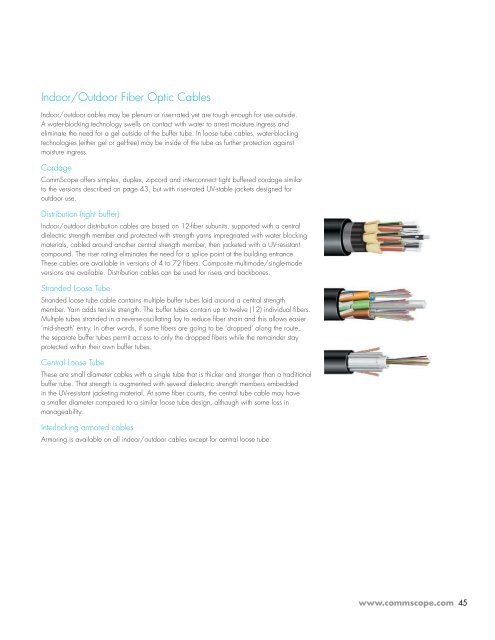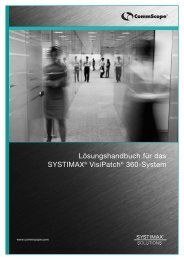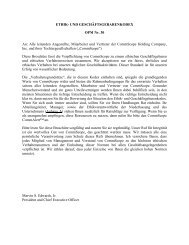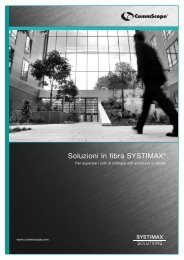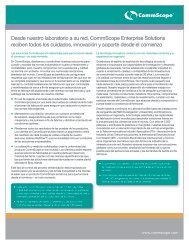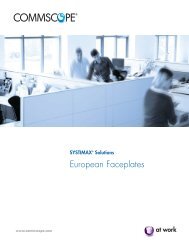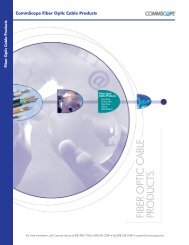Enterprise Design Guide - Public - CommScope
Enterprise Design Guide - Public - CommScope
Enterprise Design Guide - Public - CommScope
Create successful ePaper yourself
Turn your PDF publications into a flip-book with our unique Google optimized e-Paper software.
Indoor/Outdoor Fiber Optic Cables<br />
Indoor/outdoor cables may be plenum or riser-rated yet are tough enough for use outside.<br />
A water-blocking technology swells on contact with water to arrest moisture ingress and<br />
eliminate the need for a gel outside of the buffer tube. In loose tube cables, water-blocking<br />
technologies (either gel or gel-free) may be inside of the tube as further protection against<br />
moisture ingress.<br />
Cordage<br />
<strong>CommScope</strong> offers simplex, duplex, zipcord and interconnect tight buffered cordage similar<br />
to the versions described on page 43, but with riser-rated UV-stable jackets designed for<br />
outdoor use.<br />
Distribution (tight buffer)<br />
Indoor/outdoor distribution cables are based on 12-fiber subunits, supported with a central<br />
dielectric strength member and protected with strength yarns impregnated with water blocking<br />
materials, cabled around another central strength member, then jacketed with a UV-resistant<br />
compound. The riser rating eliminates the need for a splice point at the building entrance.<br />
These cables are available in versions of 4 to 72 fibers. Composite multimode/single-mode<br />
versions are available. Distribution cables can be used for risers and backbones.<br />
Stranded Loose Tube<br />
Stranded loose tube cable contains multiple buffer tubes laid around a central strength<br />
member. Yarn adds tensile strength. The buffer tubes contain up to twelve (12) individual fibers.<br />
Multiple tubes stranded in a reverse-oscillating lay to reduce fiber strain and this allows easier<br />
‘mid-sheath’ entry. In other words, if some fibers are going to be ‘dropped’ along the route,<br />
the separate buffer tubes permit access to only the dropped fibers while the remainder stay<br />
protected within their own buffer tubes.<br />
Central Loose Tube<br />
These are small diameter cables with a single tube that is thicker and stronger than a traditional<br />
buffer tube. That strength is augmented with several dielectric strength members embedded<br />
in the UV-resistant jacketing material. At some fiber counts, the central tube cable may have<br />
a smaller diameter compared to a similar loose tube design, although with some loss in<br />
manageability.<br />
Interlocking armored cables<br />
Armoring is available on all indoor/outdoor cables except for central loose tube.<br />
www.commscope.com 45


